
Our Projects are
Transforming African Trade
Quick Contacts
2nd Floor, Fidelity Insurance Centre Waiyaki Way, Westlands
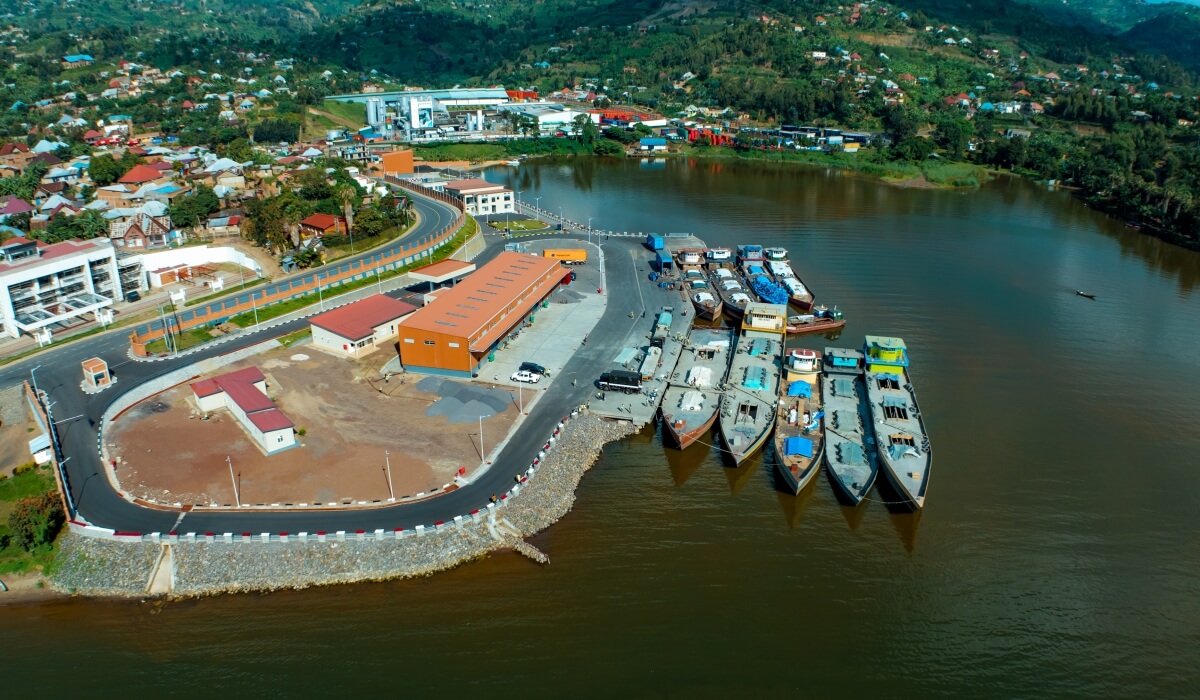
The Ministry of Infrastructure will, Friday, December 6, officially launch the Rubavu Port, a modern facility set to boost trade not just in Rwanda but across the region. As the country’s largest port, the facility is expected to help ease cross-border trade and enhance connectivity between Rwanda and DR Congo, and support local communities through increased economic opportunity anchored on trade, according to officials. Nestled in Nyamyumba Sector on the shores of Lake Kivu in Western Province, the port spans an area of two hectares with two main terminals, one for cargo and and the other passengers. The facility, which has been operating under a pilot phase for the last one year, can handle 700,000 tonnes of cargo and at least 2.7 million passengers annually. The port can simultaneously accommodate two cargo vessels (quays), each spanning 60 metres and capable of carrying 500 deadweight tonnage (DWT).
A positive outlook
While this capacity is relatively small by global maritime transport standards, officials told The New Times that one vessel can accommodate 35 containers. “Generally, the pilot phase painted a positive outlook. The main objective was to attract businesses and offer alternative, affordable routes,” said Jean Marie Ndizeye, the Inland Water Transport Senior Engineer at the Rwanda Transport Development Agency (RTDA).
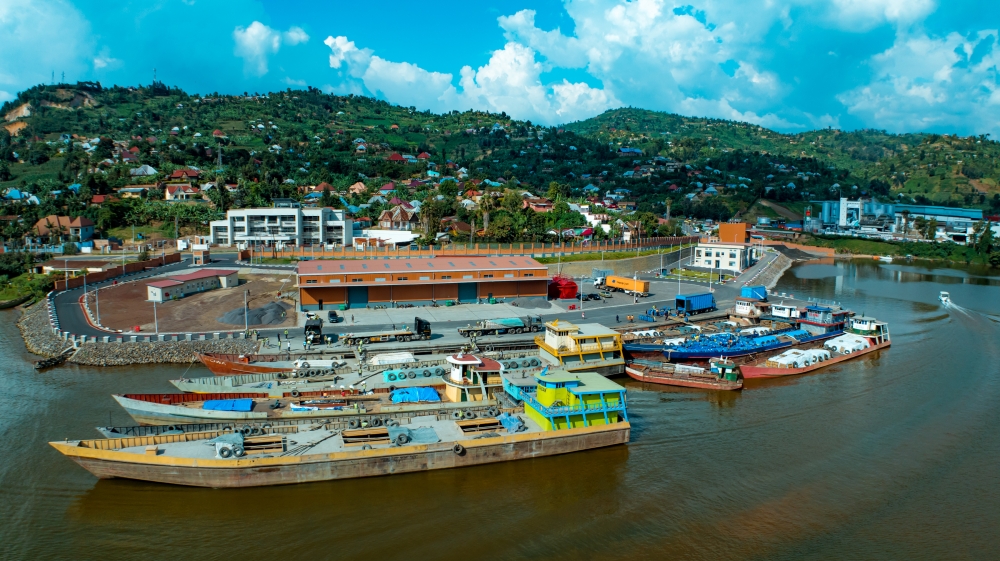
A landscape view of the newly constructed port on the shores of Lake Kivu close to the DR Congo border.
The project is being developed by the Rwandan government through the RTDA, with funding from Netherlands-backed Invest International and the UK government through TradeMark Africa. According to Ndizeye, the cargo section includes an accommodation facility for staff, a petrol station, a wastewater treatment plant, and a quay for docking services. The passenger terminal houses the port’s main offices and security checks.
Ndizeye noted that the initiative will revolutionise the transportation landscape, by improving efficiency and reducing costs for cargo and passenger transport, along Lake Kivu. He added that the facility will also enhance investment opportunities in tourism along the lake.
“More importantly, local communities are in for a treat. We now have four cooperatives of workers handling the business of loading and unloading. At least 80-150 workers are in employment daily from 7a.m to 4p.m, and this number is expected to increase as trading activities continue to grow.”
The new port is expected to offer business more alternative crossing points. Key commodities such as cement, bottled beverages, potatoes, and dairy products will “move seamlessly” between the North and South, fostering economic growth around the lake. Remy Ugirashebuja, the Chairman of COTRAMAKI, an umbrella organisation of vessel owners on Lake Kivu, echoed similar sentiments.
“This is a positive development for us because the cost of transportation will significantly decrease. Trade is smarter today; smart trade is the key. Our unique umbrella can transport 60 trucks per day. We have tested the port during the last four months of the pilot phase, and the results are positive.”
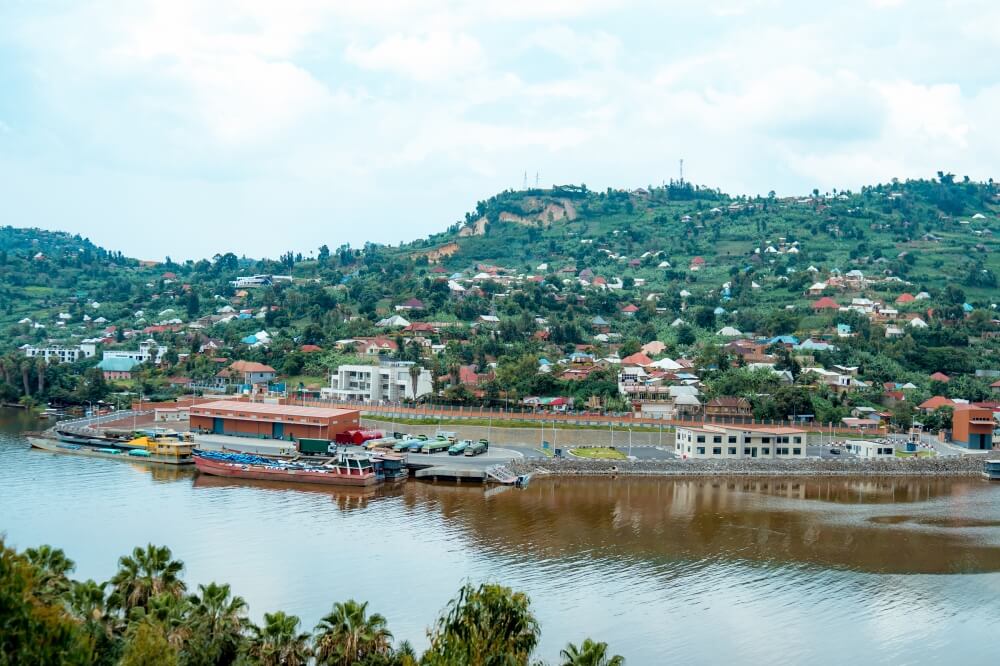
The facility is set to ease and improve cross-border trade across Lake Kivu.
Ugirashebuja also cited the seamless transportation of commodities from the lake to final destinations as one of the advantages that come with the new facility. Previously, security concerns and the absence of a harmonized process discouraged many members from trading. Thanks to the port, most have returned, and the organization anticipates significant growth.
According to Ugirashebuja, the Congolese border community heavily relies on Rwandan food commodities. “We also export cement, and this port will streamline the process, unlike previous experiences.”
On an average day, at least 100 containers are transported through Rubavu and Rusizi districts to destinations such as Bukavu in DR Congo’s eastern region.
Rwanda is also positioned as a regional corridor for supplying the DR Congo with products from Uganda, Burundi, and Tanzania. The maritime route presents a significant advantage for traders.
Ugirashebuja stressed the importance of low tariffs, noting that exorbitant costs would not benefit traders. Challenges faced by Rwandan traders included delays at the landing site where trucks could spend up to 10 days before being offloaded due to limited capacity and poor management.
These issues will no longer be the case, he told The New Times. Other bottlenecks included high transport costs, complicated cross-border procedures, and long distances, among others.
Other ports in the pipeline
Rubavu port is one of four proposed ports on the shores of Lake Kivu as Rwanda moves to improve efficiency and reduce costs for cargo and passenger transport along the lake.
Dubbed the Lake Kivu Harbour Transport Project, the plan seeks to harness the untapped potential of water transport in the country.
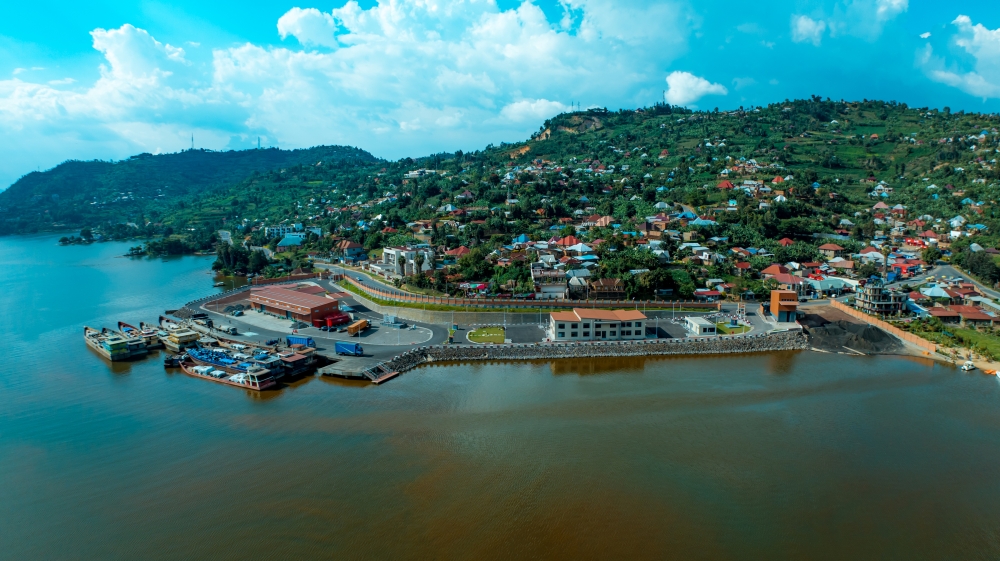
The Rubavu port lies close to the border between Rwanda and DR Congo, not far from one the busiest border crossings in the world.
The other three proposed ports include Rusizi (halfway through completion), Karongi, and Nkora. Funds mobilisation is also underway for Kirambo, Nyamirundi, Mugonero, and Nkombo passenger ports, according to RTDA.
ALSO READ: RPF promises to construct modern ports on Lake Kivu
The choice of Rubavu and Rusizi for new harbor facilities is strategic, as these districts account for about 70 per cent of Rwanda’s total cross-border trade volumes, said Rosine Uwamariya, Country Director at TradeMark Africa.
ALSO READ: Rwf1.7bn Rubavu market will empower informal cross border traders
A feasibility study commissioned by TradeMark Africa in 2017 deemed the project economically and financially viable, paving the way for strategic investment in a cost-effective, greener, and safer mode of transport compared to road transport.
“The project’s primary goal is to enhance connectivity and reduce trade costs, with estimates suggesting a substantial drop from $28.40 per metric tonne in 2017 to $12.17 once the project is fully operational. This represents potential savings of $15.7 per metric tonne for the longest trade route from Rubavu to Rusizi,” Uwamariya said.
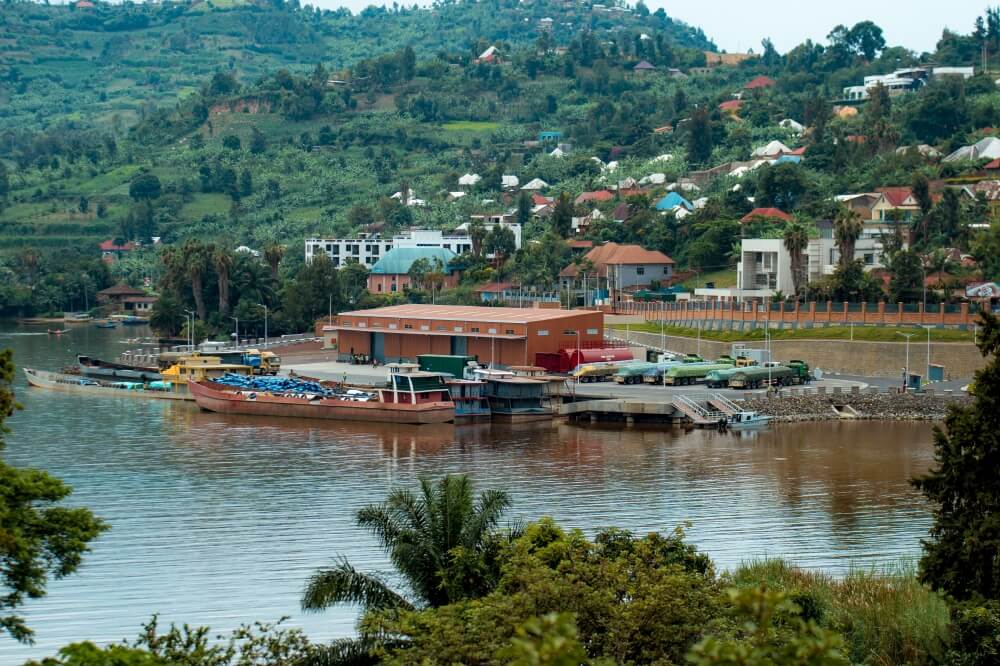
The Rubavu port is comprised of two main sections, a cargo terminal and a passenger terminal.
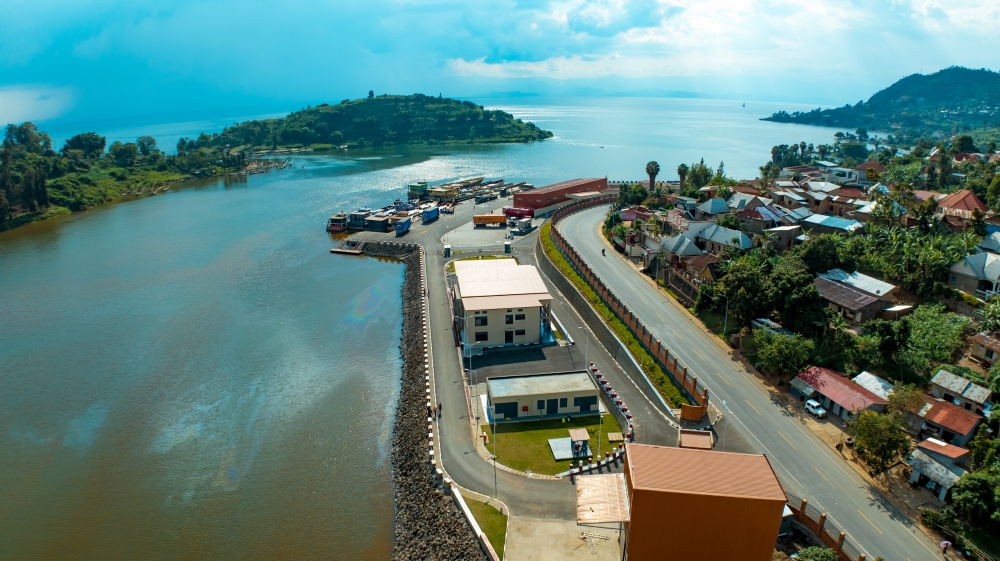
Rwanda and DR Congo boasts one of the world’s busiest commerical border crossings.
She added, “The completion of the first port facility on Lake Kivu marks the beginning of a new era for regional trade and economic development. As the project unfolds, we anticipate a ripple effect of positive change, boosting trade and creating jobs by generating new business opportunities related to port activities, trade, and logistics, and fostering collaboration between Rwanda and its trading partners.”
More investment is needed to fully realize Lake Kivu’s potential, Ndizeye noted. “To fully realize the lake’s potential, additional investments are planned for the development of both Karongi and Nkora ports to complement Rubavu and Rusizi. There is also an aspect of improving safety on the lake by integrating navigation aids and rescue centres,” Ndizeye said.
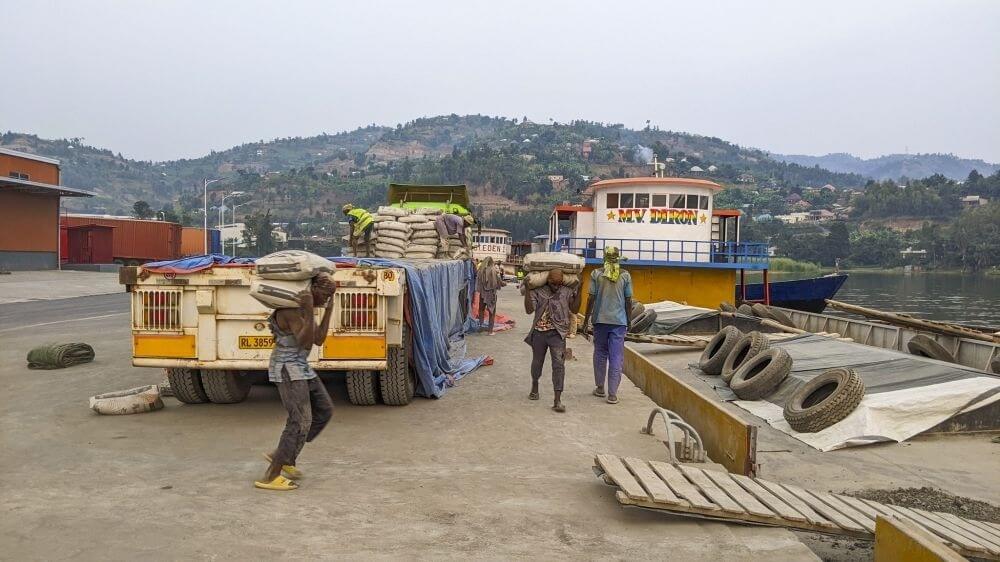
The government will officially launch Rubavu Port on Friday, December 6.
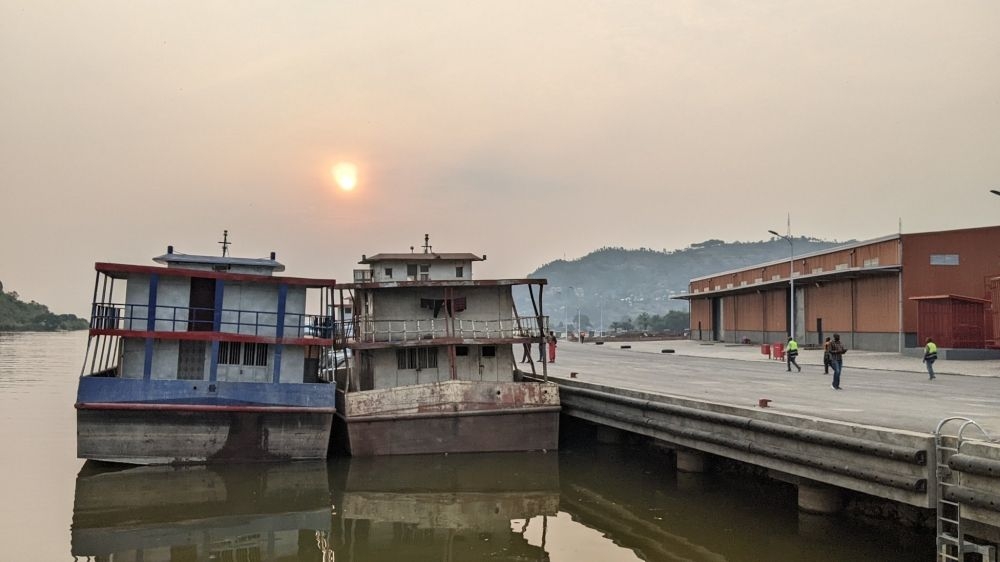
Disclaimer: The views and opinions expressed in this article are those of the authors and do not necessarily reflect the official policy or position of TradeMark Africa.